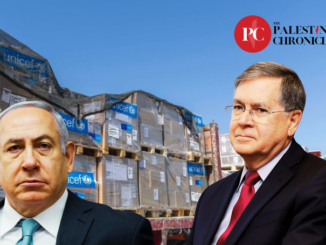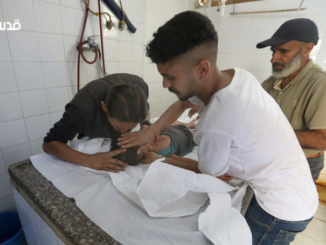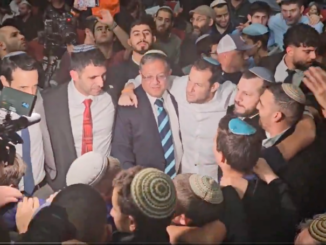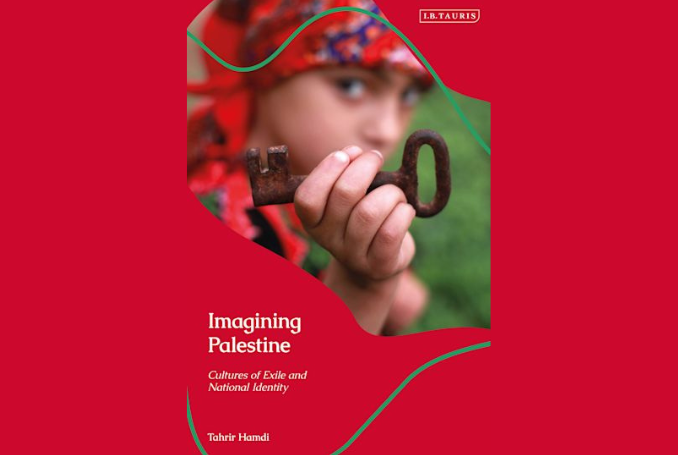
By Jim Miles
(Imagining Palestine – Cultures of Exile and National Identity. Tahrir Hamdi. I. B. Taurus, Bloomsbury Publishing Plc, London, 2023.)
In her recent work, “Imagining Palestine”, Tahrir Hamdi has made an intriguing, thought-provoking, and challenging discussion on the idea and reality of Palestine. Imagining Palestine is the ongoing process of remembering and living the ongoing tragedies of the nakba – and keeping alive the culture, geography, and ideals of the Palestinian people. There are two main themes that stand out throughout the ‘imagining’ process: the ideas of exile and the necessity of violent resistance.
Exile
Throughout the discussions of the various Palestinian writers and artists is the recurring theme of exile. Two other terms are used frequently – dispossession and of dispersion. This refers to the physical/geographical displacement of the refugees, internal and external, in the many refugee camps in Israel, Syria, Lebanon, and Jordan as well as the refugees living farther abroad in many countries around the world. Internal exile includes the many apartheid bantustans, the hundreds of checkpoints, the ‘wall’, and all other Israeli initiatives to limit travel of any kind – medical or agricultural or family – within occupied Palestine (being the whole).
Exile also includes the culture and ideas creating a Palestinian narrative – the attempt by the colonial settler Zionists to eliminate the elements of Palestinian life ranging from the destruction of libraries, and the expropriation of agriculture, to the destruction of the olive trees. Many of the latter are over one thousand years old and represent family, the past, and the future; they highlight both ecological and cultural violence against the Palestinians – a bitter leaf with life-giving properties.
Behind the idea of exile is of course the right of return,
The United Nations General Assembly adopts Resolution 194 (III), resolving that “refugees wishing to return to their homes and live at peace with their neighbors should be permitted to do so at the earliest practicable date, and that compensation should be paid for the property of those choosing not to return and for loss of or damage to property which, under principles of international law or equity, should be made good by the Governments or authorities responsible.”
The symbols of Palestinians’ right of return are characterized by the deeds to land and the keys to houses stolen or destroyed by the Israeli military during the 1948 nakba. Until all Palestinians are free to return home, those few that do, as discussed by Tahrir, are not truly returnees, but remain in exile within their homeland.
Violent Resistance
As recognized by the writers reviewed in Imagining Palestine, the idea of resistance is paramount, “the colonized must liberate themselves by ‘use of all means, and that of force first and foremost.’”. International law allows for an occupied people/territory to legally resist the occupying/colonizing power. For those imagining Palestine, culture comes first then the resistance struggle – signifying a unity of purpose, an inclusiveness and not a mixture of individualized ideals.
In other words, by dividing the Palestinian people into apartheid regions, into different ‘terrorist’ organizations, into different levels of control superseded by the Palestinian Authority acting as security police for Israel, the Israelis – and factions within Palestine itself – preclude an organizing, organic whole necessary for successful resistance against an occupying force. A “collective national identity” is necessary first before a resistance can be successfully implemented.
As expressed by Tahrir,
“The living heritage of Palestine has been focussed and repurposed for the aim of creating a culture of resistance. To imagine Palestine does not mean to contrive something that was not there, but rather to make possible the very idea of resistance, victory, and liberation…an enabling idea.”
Subthemes
Several other themes occur through Tahrir’s analysis of those Imagining Palestine.
The complicity of Arab regimes is reiterated frequently and although not dwelt upon, it is recognition that the ‘regime’, the leaders of the Arab countries, are more concerned about their own survival than the problems faced by the Palestinians. Platitudes are made, peace treaties are made, official recognition of Israel is given, and still, the Palestinians are ignored. Except….
Except as shown by the recent Football World Cup in Qatar (after the publication of this book), the Arab street is still very much aligned with the Palestinians regardless of their separate governments’ attitudes and actions. Farther abroad from Ireland and Scotland to Argentina and others, solidarity with Palestine is strong at the level of international football – not the organizers, but the fans and the players.
Another subtheme, related to all above, is the vast amount of US support for the Israeli government as well as the influence the US carries over many of the Arab states. Capitalism thrives in this environment: three companies “and others thrive on the ‘always war’ policy of the world capitalist system, which gave birth to slavery and the colonialist enterprise.” A strong (im)moral component enters into this support as well with the combination of the evangelical right wishing for the end times and the antiterrorist rhetoric used mainly to reinforce US attempts at global hegemony (via military support for the US $).
Indigenous rights is another subtheme mentioned throughout the book. In particular, the rights of Indigenous North Americans and South Africans are used in comparison to their similarities to the colonial settler regime in Israel. African Americans, while not ‘colonized’ in the strictest sense, are a product of the capitalist-colonial mindset where the ‘other’ is, at best, property to be bought and sold, and when not useful, to be eliminated in one fashion or another.
Resistance
The recreation and remembering of Palestinian culture in all its forms, and the bringing together of a collective national identity, a living heritage creates an imagined future Palestine as a unitary democratic and peaceful society. The will to resist is alive in many forms and an Imagined Palestine exists, anticipating its liberation as a free, independent country.
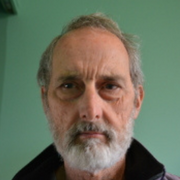
– Jim Miles is a Canadian educator and a regular contributor/columnist of opinion pieces and book reviews to Palestine Chronicles. His interest in this topic stems originally from an environmental perspective, which encompasses the militarization and economic subjugation of the global community and its commodification by corporate governance and by the American government.

